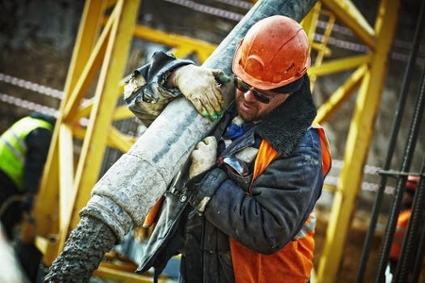There are new subdivisions going up all the time near where I live, and not all of the residents are thrilled about it. I understand that it’s no fun when you trade open spaces for new neighborhoods, but I have to say that I find some of the opposition a little extreme. I’m not sure why people are so upset by the new houses, why farmers hate the new residents, or why my grandpa insists that the new houses “aren’t built to last,” which doesn’t make much sense to me (are we worse at building homes now than we were fifty years ago? That doesn’t sound right). What’s the problem here?
We build a lot of houses here in the United States. Roughly 560,000 brand-new homes were sold nationwide in 2016, and that number has been trending up since hitting a post-financial crisis bottom in 2011. And we’re still building less than half as many housing units per year as we did in 2005, so there is plenty of room for growth.
And new subdivisions can be great for a region, say the Northville, Michigan home builders at Robertson Homes. To have new subdivisions, your region must be attracting a fair number of transplants–transplants that also have enough money and good enough career prospects to invest in a brand-new home. That’s a good sign for economic health of your region.
But new subdivisions aren’t good news for everyone. Subdivisions and farmers, for instance, have been at odds for decades: depending on the zoning and proximity of the two to each other, there may be issues with odors, appearances, and more. Enough complaints from a subdivision could lead to problems for local farmers, even if they’ve been there for longer. Of course, individual outcomes will depend on things like local ordinances and zoning laws–but without the subdivisions, the farmers don’t have to worry as much about such things.
But what about the subdivisions themselves–are they, as your grandpa believes, shoddier than the homes of the past? That’s up for debate, and the answer largely rests with the materials the home builders use, say the Lyndhurst, Ohio-based designers at Lyndhurst Lumber. Some home builders skimp on materials, opting for cheaper wood, cheaper windows, cheaper doors–you name it. Modern engineering allows home builders to do more with less, but some argue that today’s builders aren’t just efficient about quantity–they skimp on quality, too.
That’s no doubt the case at least some of the time, but others argue passionately that modern innovations have made typical houses better than ever. In general, if your home builders are using decent materials, they are building homes that will last–just as the home of yesterday have lasted to the modern day.
“The ornament of a house is the friends who frequent it.” — Ralph Waldo Emerson


